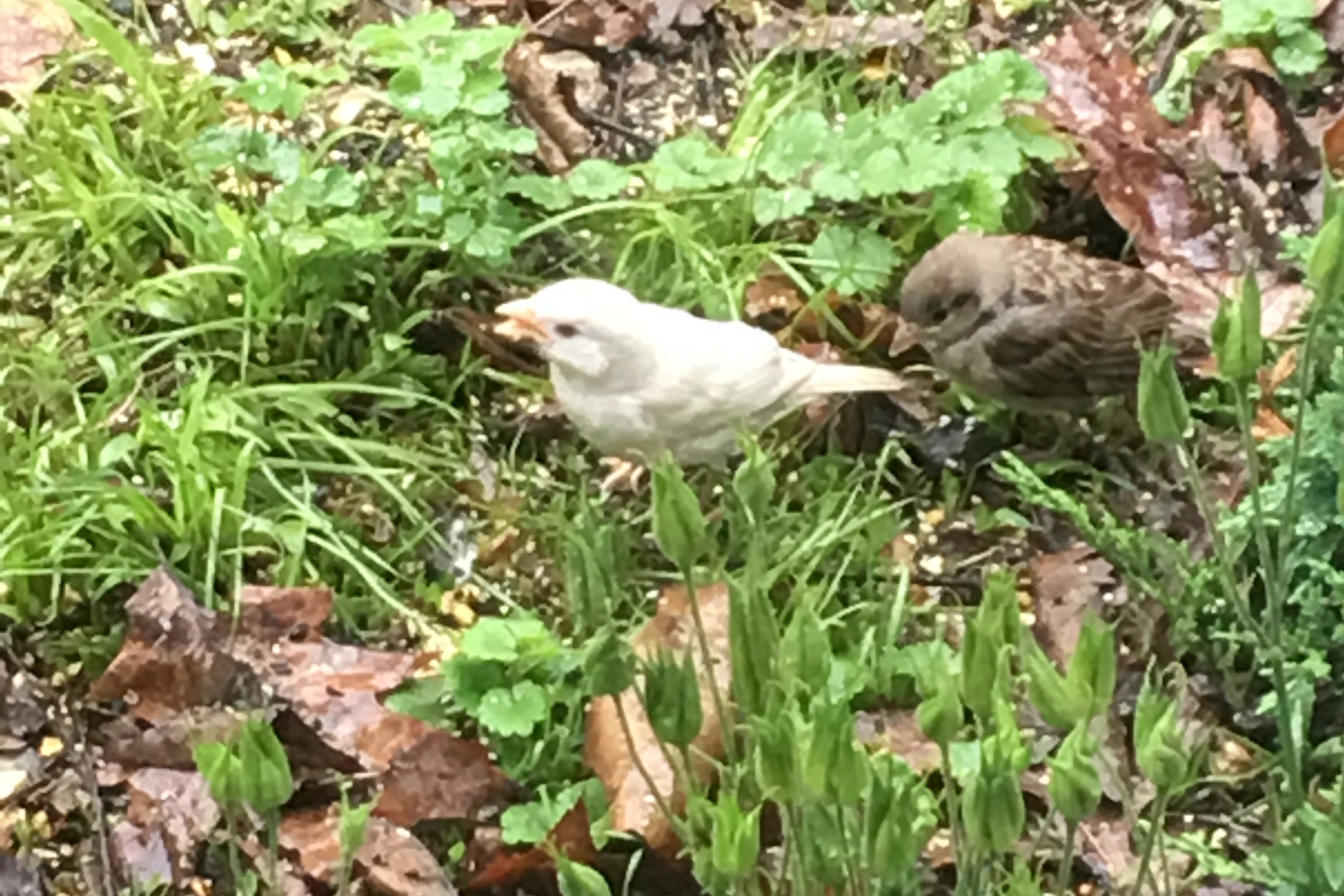Lori Braden found this sparrow on May 25. She was visiting a home about 5 miles southeast of Mooresville, IN. From her picture, it certainly seems as thought this is an albino house sparrow. It completely lacks any color pigmentation though its eyes appear to dark. Therefore some might say this is not a true albino. However, after a quick look at the Cornell Lab page on plumage variation, you will find an American Robin with dark eyes that they term “a clear example of a true albino.”
The other choice would be to term the bird “leucistic”. Also know as partial albinism, this is a lack of the melanin pigment, but not completely. The pigmentation affects the legs and beak as well as the feathers. Leucistic birds often appear to have white patches. If 100% of the pigmentation is missing, it is then termed an albino. Eyes without pigmentation would appear pink.
It is also possible for a bird to have too much melanin pigment. These “melanistic” birds are darker than normal.
Albinos have always been considered special. Some believe encountering a white bird or animal brings luck. Hunters shooting a white animal are said to be in for a streak of bad luck. In previous eras in some parts of the world, albino humans where hunted and dismembered to bring luck to one with a limb. That certainly takes things to the next level. However, most believe encounters are lucky and even a positive spiritual event.
Photo by Lori Braden

